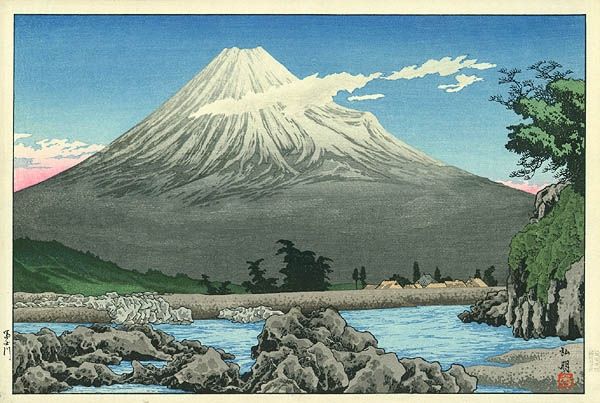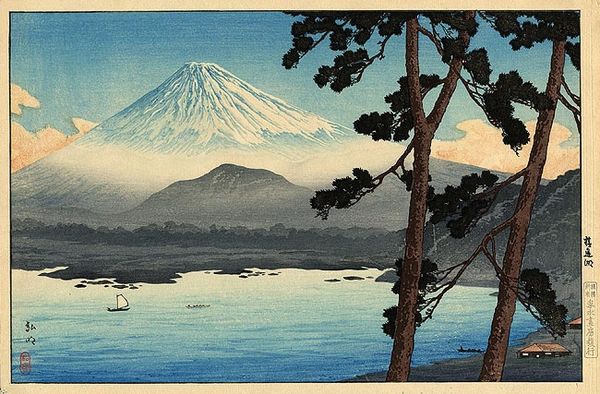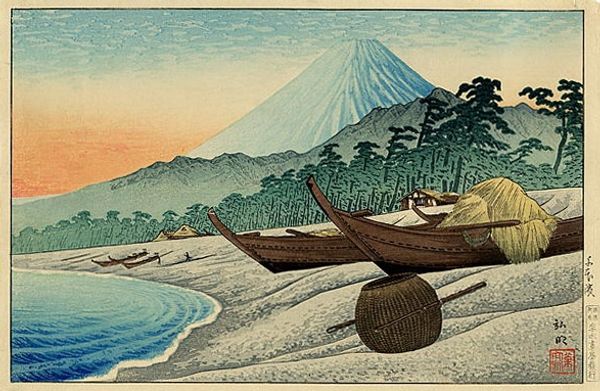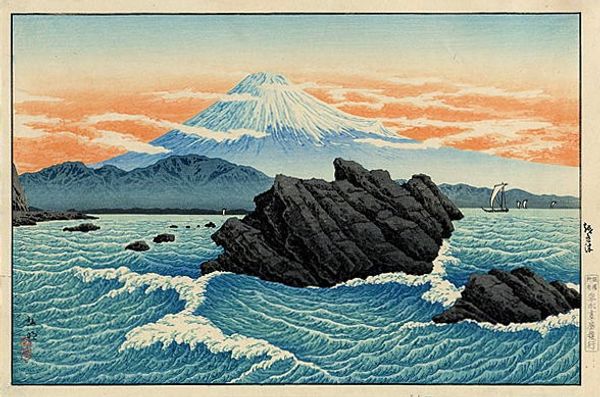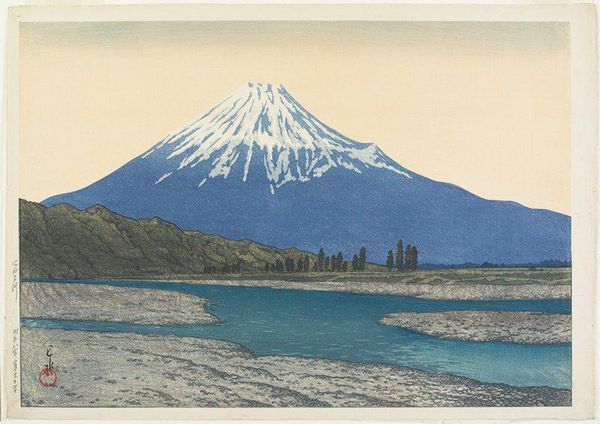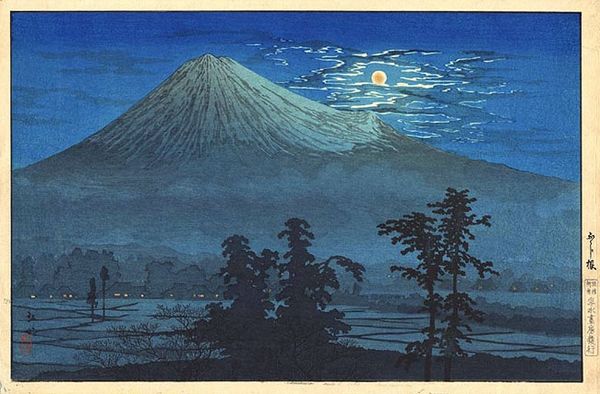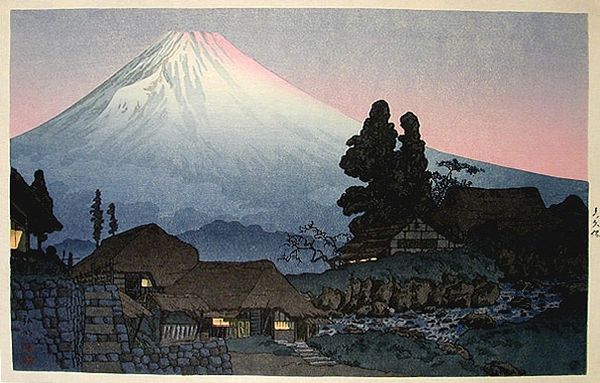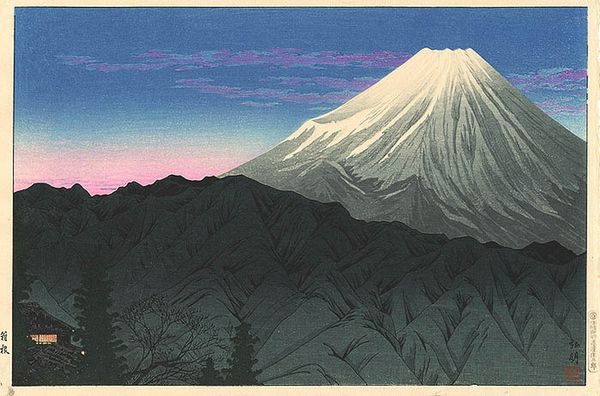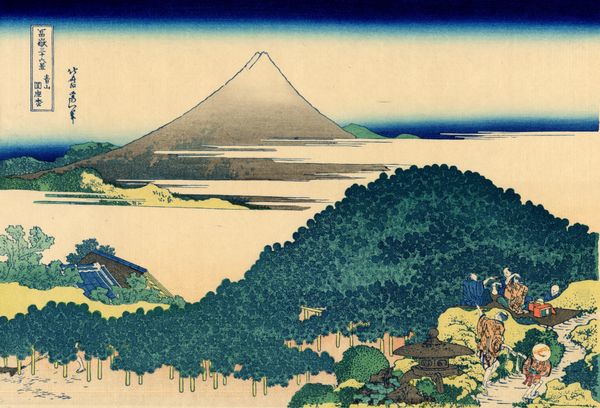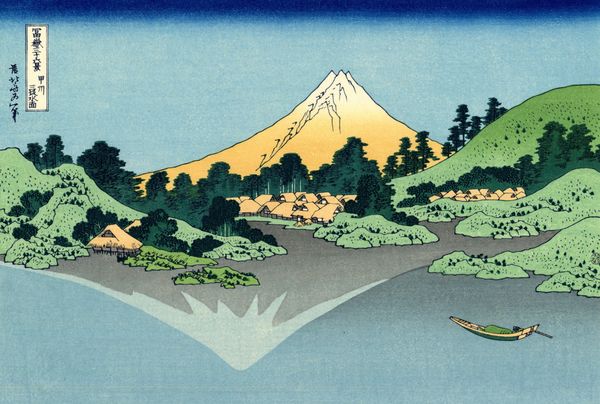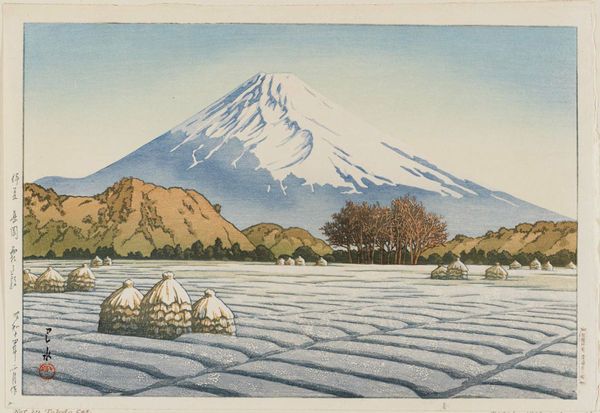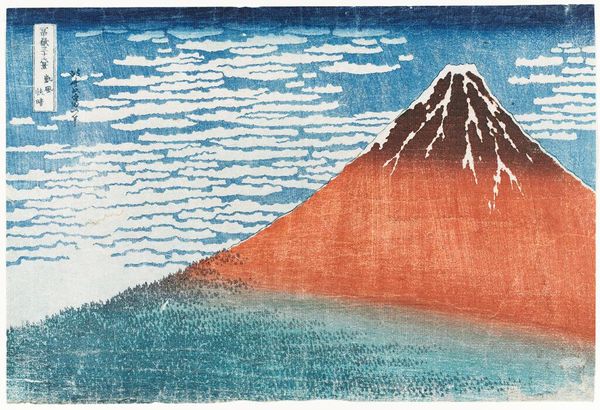
Copyright: Public domain
Curator: This is "Fuji from Miho no Matsubara" by Shotei Takahashi, created in 1929. It's a woodblock print, a medium deeply embedded in Japanese artistic traditions, especially Ukiyo-e. Editor: It strikes me as serene, almost ethereally calm. The crisp blues of the sea contrasting with the stark white of Mount Fuji... It feels balanced, but also remote. Curator: Indeed. Ukiyo-e prints like this, despite their beauty, were initially popular art affordable to the masses. Consider the labor involved – carving a separate block for each color. The material conditions of its production shaped its distribution and accessibility, impacting its role in society. Editor: Thinking about those individual blocks, it makes me appreciate the subtle variations in color. I wonder about the lives of the artisans and laborers who crafted these images intended for widespread consumption? Were they recognised, or simply producing objects for a market? Curator: It's important to note how "Fuji from Miho no Matsubara", despite its scenic qualities, engages with deeply entrenched nationalistic imagery. Fuji itself carries a heavy symbolic weight in Japanese cultural identity – a symbol co-opted and amplified throughout history. This makes the landscape not simply pretty, but ideologically charged. Editor: So, the mass-produced print served as an instrument to normalize certain visual associations – Fuji equals Japan, Japan equals strength, that kind of narrative? And the consumers were buying into not just the aesthetic appeal, but also national ideology? Curator: Precisely. The woodblock print becomes a carrier of socio-political meaning. What may appear on the surface as mere natural beauty becomes a reinforcement of power structures. Editor: Reflecting on the materials—wood, paper, ink—and their transformation by human hands through the printing process reveals much about not only artistic skill but social and cultural values being reproduced en masse. Curator: Ultimately, viewing this serene landscape necessitates a deeper investigation into its material production and cultural implications. Only then do we uncover a broader truth about its place within a specific socio-historical setting. Editor: By interrogating both its process and cultural context, we're forced to realize this seemingly simple print held both immense artistry and persuasive capabilities to sway societal beliefs.
Comments
No comments
Be the first to comment and join the conversation on the ultimate creative platform.
